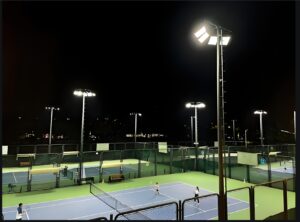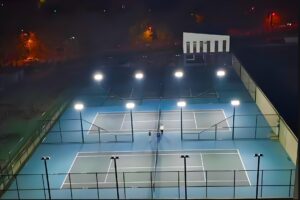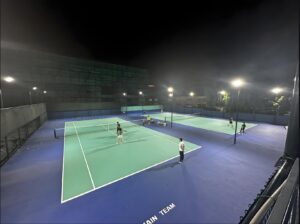In conclusion, LED lights significantly reduce power consumption compared to traditional lighting systems due to their higher efficiency, longer lifespan, reduced wattage requirements, and precise directional lighting. These benefits make LED lighting the preferred choice for sports venues, providing substantial cost savings in energy usage and contributing to a more sustainable, environmentally friendly operation.
The adoption of LED lighting in sports venues, including tennis courts, has a profound impact on both operational costs and sustainability efforts. With their energy efficiency, long lifespan, and ability to reduce maintenance needs, LED lighting systems offer significant financial and environmental benefits for venues. Below is an exploration of how LED lights influence operational costs and contribute to sustainability goals.


LED lighting’s impact on operational costs and sustainability efforts is profound. Its energy efficiency, long lifespan, low maintenance requirements, and environmental benefits help sports venues cut down on power consumption and operational expenses. Furthermore, by minimizing waste and reducing carbon emissions, LED lights support sustainability initiatives, making them an ideal solution for venues striving to improve both their financial performance and environmental impact. As the demand for eco-conscious practices grows, the use of LED lighting is likely to continue expanding in sports venues worldwide.
One of the most compelling reasons for the adoption of LED lighting in high-use environments like sports venues is their extraordinary lifespan. Compared to traditional lighting systems, LEDs offer several advantages that make them not only cost-effective but also ideal for settings that require consistent, long-term performance. Below, we explore how the lifespan of LEDs contributes to their cost-effectiveness in high-use environments such as tennis courts, stadiums, and arenas.

(To Be Continued)
Get in touch for free lighting customization